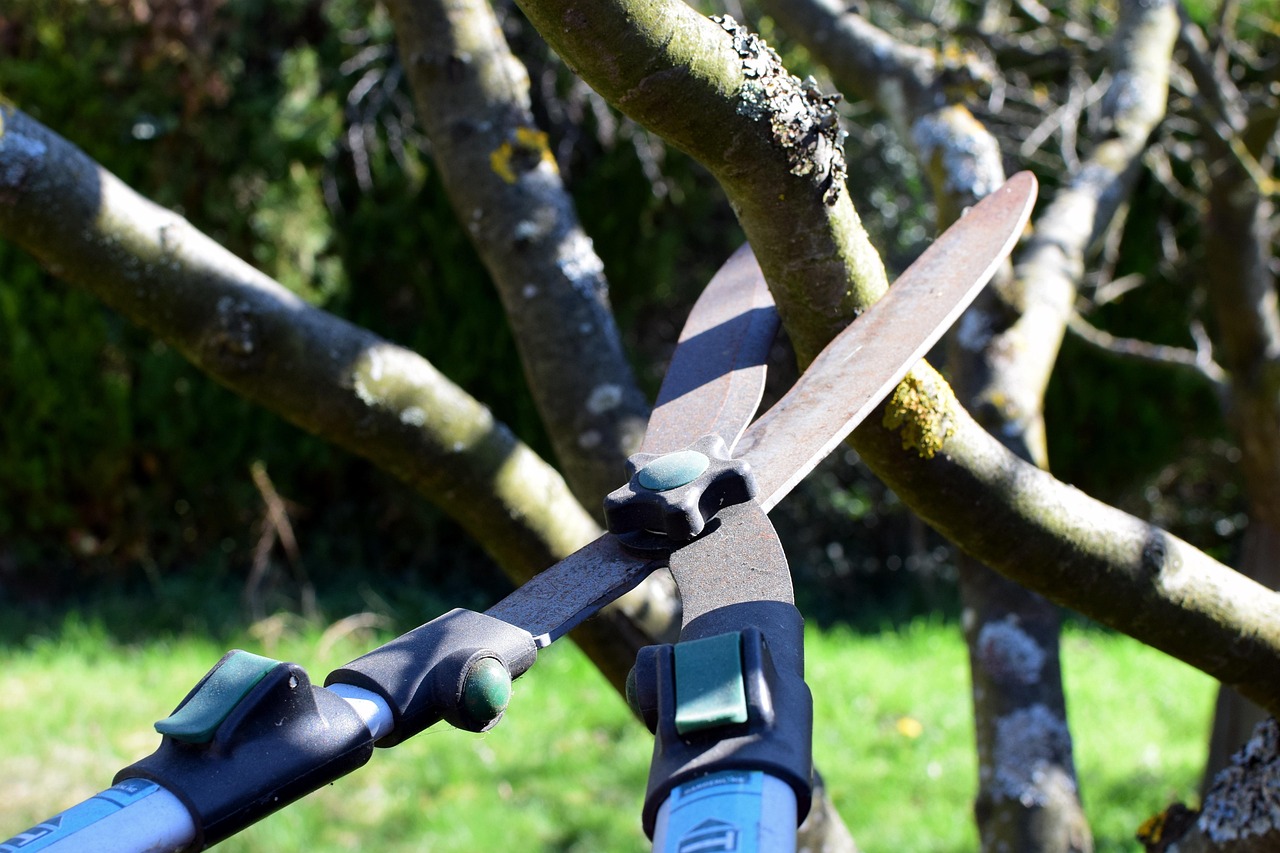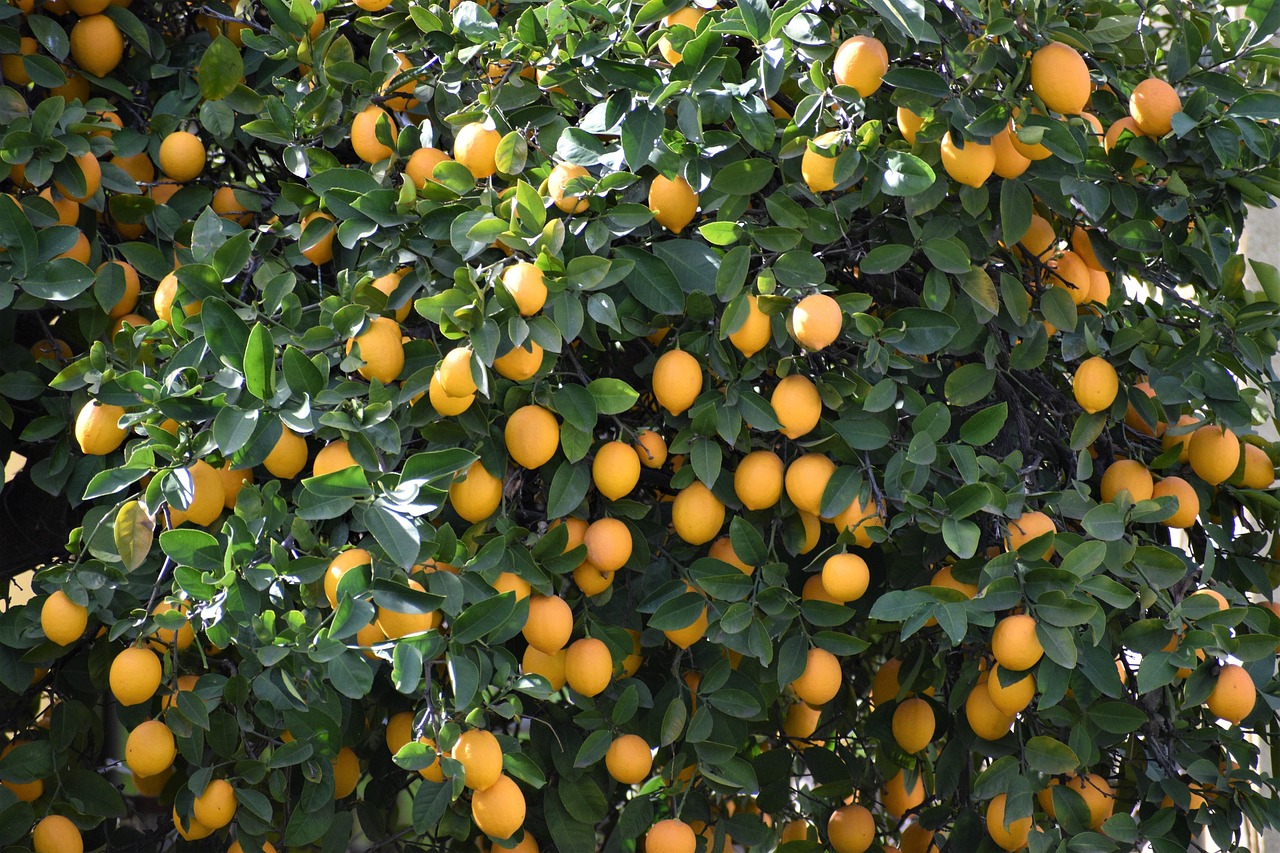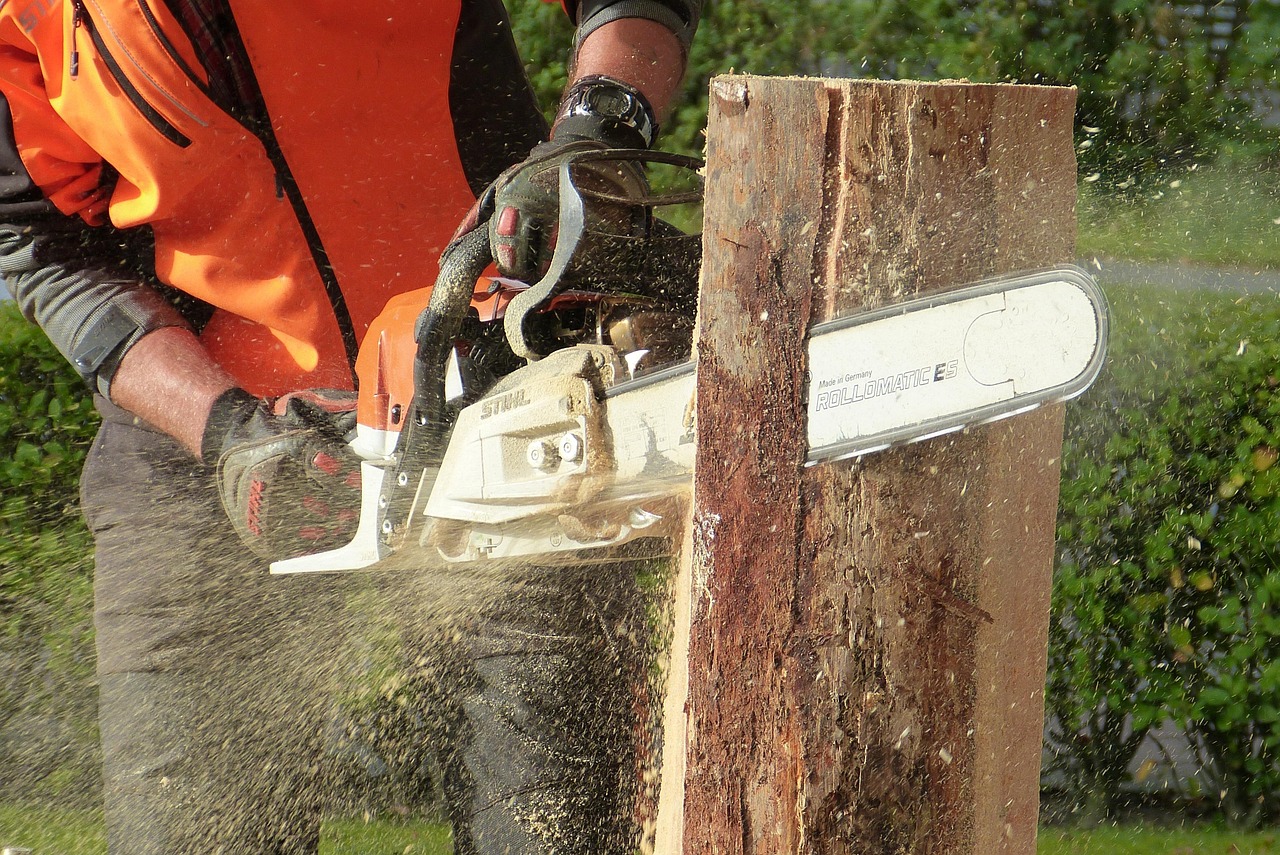Lemon trees require careful pruning to thrive. Common mistakes include cutting at the wrong time, over-pruning, and neglecting to shape the tree properly. To avoid these issues, it is essential to learn the right techniques and timing for effective lemon tree care.
Lemon trees are a popular choice for home gardeners due to their fragrant blossoms and delicious fruit. However, to maintain a healthy lemon tree, regular pruning is necessary. Pruning helps shape the tree, promotes airflow, and encourages new growth. Despite its importance, many gardeners make mistakes during the pruning process that can negatively impact the tree’s health and fruit production.

Understanding the common errors in lemon tree pruning is crucial for successful gardening. Each mistake can lead to stunted growth or disease. The right approach to pruning ensures the tree remains productive and beautiful throughout the seasons. In this article, we will explore the most frequent pruning mistakes and provide effective strategies to avoid them.
Common Pruning Mistakes
When it comes to pruning lemon trees, several common mistakes can hinder their growth. Here are some of the key errors to watch out for:
- Pruning at the Wrong Time: Timing is critical when it comes to pruning lemon trees. Pruning during the wrong season can lead to reduced fruit production.
- Over-Pruning: Removing too much foliage can stress the tree. It may take longer for the tree to recover and produce fruit.
- Neglecting Tree Structure: Failing to maintain an appropriate shape can lead to poor airflow and increased susceptibility to pests.
- Not Using Proper Tools: Using dull or inappropriate tools can damage branches rather than help them.
- Ignoring Disease Signs: Failing to remove diseased branches can spread infections throughout the tree.
To assist with understanding these mistakes, the following table summarizes the key points regarding pruning mistakes and their consequences.

| Pruning Mistake | Consequence | Prevention |
|---|---|---|
| Pruning at the Wrong Time | Reduced fruit yield | Prune in late winter or early spring |
| Over-Pruning | Stressed tree; slower recovery | Remove only 10-20% of foliage annually |
| Neglecting Tree Structure | Poor airflow; increased pest problems | Maintain an open canopy |
| Not Using Proper Tools | Injury to branches; increased risk of disease | Use sharp, clean tools |
| Ignoring Disease Signs | Spread of infection | Regularly inspect for disease |
Aiming for healthy growth requires a clear understanding of when and how to prune lemon trees. Pruning during late winter or early spring ensures that the tree is ready for a new growing season. This timing helps minimize stress on the tree and encourages robust growth in the upcoming months.
Another vital aspect of pruning is recognizing how much foliage to remove. Over-pruning can severely affect a lemon tree’s ability to photosynthesize, which is essential for its health and productivity. It is advisable to limit pruning to approximately 10-20% of the total foliage each year. This approach allows the tree to maintain its strength while still shaping its structure.
Choosing the Right Tools
The tools used for pruning play a significant role in maintaining a healthy lemon tree. Using sharp and clean tools prevents unnecessary damage and reduces the likelihood of disease transmission. Here are some essential tools every gardener should consider:

- Bypass Pruners: Ideal for cutting small branches with precision.
- Loppers: Useful for larger branches that require more force.
- Saws: Necessary for removing thick limbs that cannot be cut with pruners or loppers.
- Gloves: Protect hands from thorns or sharp branches.
Maintaining these tools is just as important as choosing them. Regular cleaning and sharpening ensure optimal performance, making pruning easier and more effective.
Identifying signs of disease is crucial for maintaining a healthy lemon tree. Regular inspections allow gardeners to catch any problems early. It is important to remove any affected branches promptly to prevent further spread of infections.
Understanding these fundamental aspects of lemon tree pruning not only prevents common mistakes but also fosters healthy growth. As gardeners gain experience, they will become more adept at recognizing what their trees need throughout different seasons.

Pruning Techniques for Lemon Trees
Understanding the right pruning techniques is essential for the health and productivity of lemon trees. Different approaches can yield various results, and knowing when and how to apply these techniques can make all the difference. The following are some effective pruning techniques that every gardener should consider.
Thinning Cuts
Thinning cuts involve removing entire branches or stems back to their origin. This technique helps improve airflow and sunlight penetration within the tree. It is particularly useful for:
- Enhancing the tree’s structure by removing crossing or crowded branches.
- Reducing the risk of disease by facilitating air circulation.
- Encouraging fruit development by allowing more light to reach the inner branches.
When making thinning cuts, it is important to choose branches that are either weak or growing inward. This will help maintain a balanced shape and promote healthier growth overall.
Heading Cuts
Heading cuts are made by cutting back a branch to a bud or lateral branch. This technique stimulates new growth and can be used to control the size of the tree. Heading cuts are beneficial for:
- Encouraging bushy growth, which can increase fruit production.
- Shaping the tree to achieve a desired height or width.
- Removing dead or damaged tips that may hinder overall growth.
When using heading cuts, it is crucial to ensure that you cut just above a healthy bud. This allows the tree to redirect energy toward new growth from that bud.
Seasonal Considerations for Pruning
The timing of pruning plays a significant role in its success. Different seasons present unique opportunities and challenges. Here’s a breakdown of the seasonal considerations:
Winter Pruning
Winter is typically the best time for major pruning tasks. During this period, the tree is dormant, which minimizes stress. Key benefits of winter pruning include:
- Reduced sap loss, as the tree is not actively growing.
- Easier visibility of the tree’s structure without leaves.
- Encouragement of vigorous spring growth due to increased sunlight exposure.
Spring Pruning
Spring pruning can also be beneficial, especially for shaping and minor adjustments. However, it is essential to be cautious during this time. Here are some considerations:
- Avoid heavy pruning, as the tree is waking up from dormancy.
- Focus on removing any dead or damaged branches rather than major shaping.
- Be aware of blooming cycles; pruning too late can affect fruit production.
Summer Pruning
Summer pruning is less common but can be effective for controlling growth and managing size. This type of pruning typically involves:
- Removing suckers or water sprouts that may detract from overall health.
- Mildly shaping the tree as needed to maintain its structure.
- Avoiding heavy cuts that may stress the tree during its active growth phase.
Avoiding Common Mistakes While Pruning
To achieve successful results, it is vital to avoid common pitfalls associated with pruning lemon trees. Here are some mistakes to avoid:
- Pruning Without a Plan: Before starting, have a clear idea of what you want to achieve. A haphazard approach can lead to poor results.
- Ignoring Tree Health: Always assess the health of the tree before pruning. A weak or diseased tree may require different care strategies.
- Neglecting Cleanliness: Failing to disinfect tools between cuts can spread disease. Always clean your tools before starting and between cuts on different branches.
- Not Considering Growth Patterns: Each tree has specific growth habits. Understanding these patterns helps in making informed pruning decisions.
By planning ahead and being mindful of these common mistakes, gardeners can significantly improve their pruning technique and enhance their lemon tree’s health and productivity.
The Benefits of Proper Pruning
Proper pruning not only addresses immediate concerns but also contributes to long-term benefits for lemon trees. Here are some key advantages:
- Increased Fruit Production: Well-pruned trees are more likely to produce larger and healthier fruit due to improved sunlight exposure and airflow.
- Enhanced Tree Health: Regular pruning reduces the likelihood of disease by maintaining an open canopy and removing potentially infected branches.
- Aesthetic Appeal: A well-maintained lemon tree adds beauty to any garden, with its lush foliage and vibrant fruit.
- Improved Accessibility: Properly shaped trees make it easier for gardeners to reach fruit during harvest time.
The positive impacts of proper pruning techniques extend beyond aesthetics, providing tangible benefits that contribute to a thriving lemon tree and fruitful harvests in the future.
Understanding Lemon Tree Growth Cycles
To effectively prune lemon trees, it is essential to understand their growth cycles. Lemon trees have distinct phases of growth, each requiring different care and pruning strategies. By aligning pruning efforts with these cycles, gardeners can optimize tree health and fruit production.
Spring Growth Phase
Spring is a critical growth phase for lemon trees. During this time, new shoots emerge, and the tree begins to flourish. To support healthy growth, consider the following:
- Assessing New Growth: Observe new branches and leaves. This is the time to make heading cuts to encourage bushiness.
- Removing Weak Growth: Thin out weak or spindly shoots to focus energy on stronger branches.
- Applying Fertilizer: Utilize a balanced fertilizer to support the new growth.
Understanding how to manage the spring growth phase helps ensure that the tree develops a robust structure, ready for fruiting in the coming months.
Summer Development Phase
During summer, lemon trees continue to grow actively. This is a great time for light maintenance pruning. Here are some considerations:
- Monitoring Fruit Set: Pay attention to the developing fruit. Prune any excess shoots that may compete for nutrients.
- Watering Needs: Ensure consistent watering, as summer heat can stress the tree.
- Pest Management: Keep an eye out for pests, which can thrive in warm weather, and take necessary action.
Summer pruning should be minimal, focusing mainly on removing suckers and maintaining shape without stressing the tree.
Autumn Preparation Phase
As autumn approaches, lemon trees prepare for dormancy. Pruning during this period can help set the stage for a healthy winter. Consider these tips:
- Cleaning Up: Remove fallen leaves and debris to prevent disease.
- Assessing Tree Structure: Evaluate the overall shape and remove any crossing or crowded branches.
- Final Fertilization: Apply a slow-release fertilizer to provide nutrients through the winter.
Pruning in the autumn helps ensure that the tree enters dormancy in good shape, ready for rejuvenation in spring.
Identifying and Managing Pests and Diseases
Pests and diseases can significantly affect lemon trees. Recognizing signs of trouble early allows for timely intervention. Here are some common issues and how to manage them:
Common Pests
Lemon trees are susceptible to various pests that can hinder their growth. Some common pests include:
- Aphids: Small insects that can cause leaf curling and distortions. They can be managed with insecticidal soap or neem oil.
- Spider Mites: Tiny pests that thrive in dry conditions, leading to leaf discoloration. Increasing humidity and applying miticides can help control them.
- Citrus Leafminer: Larvae that create tunnels in leaves. Use sticky traps and maintain tree health to minimize their impact.
Diseases to Watch For
Lemon trees may also face diseases that can affect their health. Some key diseases include:
- Citrus Canker: Characterized by lesions on leaves and stems. It is best managed by removing affected areas and applying appropriate fungicides.
- Root Rot: Often caused by overwatering, leading to yellowing leaves and stunted growth. Improving drainage and adjusting watering habits are crucial for recovery.
- Powdery Mildew: A fungal disease that appears as a white powder on leaves. It can be treated with fungicides or homemade solutions like baking soda mixed with water.
Regular inspections of lemon trees enable early detection of pests or diseases, ensuring prompt action before issues escalate.
The Role of Soil Health in Pruning Success
The health of the soil directly impacts the success of pruning practices. Healthy soil promotes strong root systems, enabling better nutrient uptake. Here are essential factors regarding soil health:
Nutrient Balance
Lemon trees thrive in well-balanced soils rich in organic matter. Key nutrients include:
- Nitrogen: Essential for leaf growth; apply organic fertilizers like compost or manure.
- Phosphorus: Important for root development; ensure soil has adequate levels through amendments.
- Potassium: Supports fruit quality; use fertilizers specifically formulated for citrus trees.
Soil pH Levels
The ideal pH range for lemon trees is between 5.5 and 6.5. Testing soil pH helps determine if adjustments are needed. Consider using lime to raise pH or sulfur to lower it if necessary.
Drainage Considerations
Poor drainage can lead to root rot, making it essential to assess drainage conditions regularly. Here are some practices to improve drainage:
- Avoid Overwatering: Water deeply but infrequently, allowing the topsoil to dry out between watering sessions.
- Add Organic Matter: Incorporating compost or mulch helps improve soil structure and drainage capacity.
- Create Raised Beds: If drainage is a persistent issue, consider growing lemon trees in raised beds to enhance drainage.
A healthy soil environment supports effective pruning practices by ensuring that lemon trees have access to essential nutrients and proper moisture levels, promoting overall vitality and resilience against stressors.
Continuing Care After Pruning
After pruning lemon trees, it is essential to provide ongoing care to support recovery and encourage healthy growth. Proper follow-up practices can make a significant difference in the long-term health of the tree. Here are some crucial steps to take after pruning:
Watering Practices
Post-pruning, the watering routine should be adjusted to support the tree’s recovery:
- Monitor Soil Moisture: Check the soil moisture levels regularly. Water deeply, allowing the roots to absorb moisture without becoming waterlogged.
- Adjust Frequency: Depending on seasonal changes, adjust your watering schedule. In hotter months, more frequent watering may be needed.
- Use Mulch: Apply a layer of organic mulch around the base of the tree. This conserves moisture and regulates soil temperature.
Nutrient Management
Providing nutrients is vital for recovery and growth after pruning:
- Fertilization: Use a balanced fertilizer specifically designed for citrus trees. This will help replenish nutrients that might have been depleted during pruning.
- Organic Amendments: Incorporate compost into the soil to improve fertility and structure. Organic matter enhances nutrient availability and supports beneficial microorganisms.
- Avoid Over-Fertilizing: Be cautious not to over-fertilize, as this can lead to excessive foliage growth at the expense of fruit production.
Pest and Disease Monitoring
After pruning, it’s essential to remain vigilant about pests and diseases:
- Regular Inspections: Routinely check for signs of pests or diseases. Early detection is key to preventing infestations.
- Maintain Cleanliness: Keep the area around the lemon tree clean. Remove any fallen leaves or debris that can harbor pests or diseases.
- Integrated Pest Management (IPM): Adopt IPM strategies that combine cultural, biological, and chemical methods for effective pest control.
Understanding Pruning Tools Maintenance
Maintaining tools used for pruning is crucial for effective and safe gardening practices. Properly maintained tools ensure clean cuts and minimize damage to the tree:
- Regular Cleaning: Clean tools after each use to prevent the spread of disease. Use a solution of water and bleach or rubbing alcohol.
- Sharpening Blades: Keep blades sharp to make clean cuts. Dull blades can tear branches, leading to increased susceptibility to disease.
- Storage Practices: Store tools in a dry place to prevent rust and deterioration. Consider hanging them up or using protective covers.
Final Thoughts
Caring for lemon trees through proper pruning techniques and ongoing maintenance is vital for achieving healthy growth and abundant fruit production. Understanding common mistakes, effective pruning methods, and seasonal considerations enables gardeners to set their lemon trees up for success. Additionally, maintaining soil health, monitoring pest and disease threats, and ensuring proper tool care all contribute to the overall vitality of lemon trees.
The journey of nurturing lemon trees requires patience and knowledge. By applying best practices in pruning and care, both novice and experienced gardeners can enjoy a thriving lemon tree that produces sweet, tangy fruit year after year.
Ultimately, the art of pruning is not just about cutting branches; it’s about fostering a healthy environment where your lemon tree can flourish. With careful attention to detail and consistent care, you will reap the rewards of your hard work with bountiful harvests and a beautiful addition to your garden.
